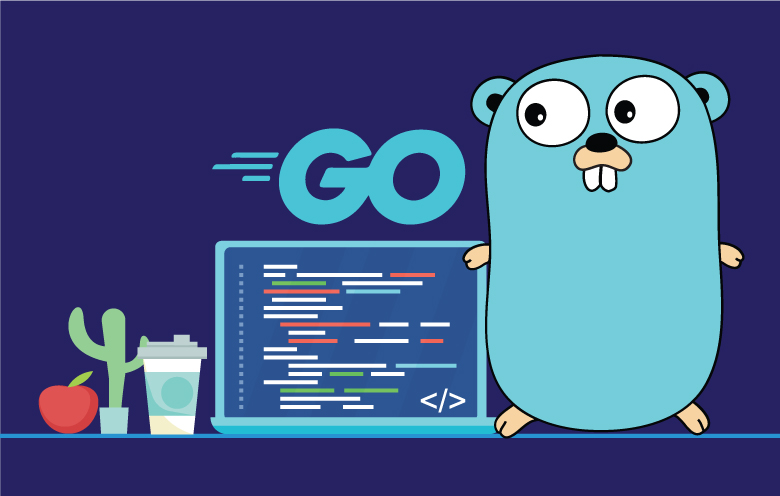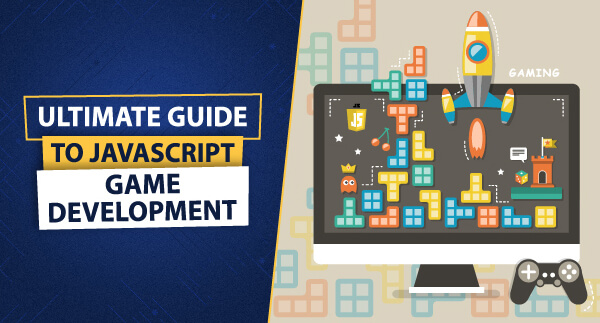Author: devtony
-

Chapter 1: Getting Started with Go
•
Installation and Setup Introduction: Setting up your Go development environment is the first step towards mastering Go. This chapter will guide you through the installation process and the initial setup required to start writing and running Go programs on your machine. 1. Downloading and Installing Go Windows: Go to the…
-

Mastering Go: From Basics to Advanced Techniques and Best Practices => Introduction
•
Overview of Go Language Introduction to Go: Go, also known as Golang, is a statically typed, compiled programming language designed by Google. It was created by Robert Griesemer, Rob Pike, and Ken Thompson and was first released in 2009. Go is known for its simplicity, efficiency, and strong support for…
-

Chapter 13: Practical Projects and Case Studies
•
In this chapter, we delve into real-world applications and case studies that demonstrate the practical use of assembly language, particularly with tools like TASM. These projects highlight how assembly language can be applied in various domains, showcasing its versatility and efficiency in system programming, embedded systems, and more. Real-World Projects…
-

Chapter 12: Future of Assembly Language Programming
•
Assembly language programming, while considered low-level and intricate, continues to evolve and remain relevant in specific areas of software development. The trends and evolution of assembly language programming can be observed through its application in various domains, including embedded systems, performance-critical applications, and educational purposes. The trend toward highly optimized…
-

Chapter 11: Integrating Assembly with High-Level Languages
•
Combining assembly language with high-level languages like C or C++ can yield efficient and flexible programs. Understanding how to mix these languages allows developers to leverage the strengths of both: the efficiency and control of assembly, and the abstraction and ease of use of high-level languages. This chapter explores the…
-

Chapter 10: Real-World Applications of TASM
•
System programming with TASM involves developing software that interacts closely with the underlying hardware and operating system to perform low-level tasks such as device control, memory management, and system resource utilization. Here’s a detailed exploration without using lists: Introduction to System Programming: System programming using TASM focuses on creating software…
-

Chapter 9: Debugging and Error Handling
•
Debugging assembly programs requires a systematic approach to identify and resolve errors effectively, ensuring the program runs correctly and efficiently. Here’s a comprehensive exploration without using lists: Understanding Debugging in Assembly: Debugging assembly programs involves diagnosing and correcting errors that affect program functionality and performance. Due to the low-level nature…
-

Chapter 8: Assembly Language Optimization Techniques
•
In assembly language programming, optimizing code involves refining algorithms and instructions to enhance program efficiency and performance. This process focuses on minimizing execution time, reducing memory usage, and improving overall program responsiveness. Code optimization strategies in assembly language typically revolve around improving the utilization of CPU resources and streamlining data…
-

Chapter 7: Interrupts and BIOS Calls
•
Understanding Interrupts is fundamental to mastering low-level system programming in assembly language. Interrupts allow a computer to respond to events or requests from hardware or software by interrupting the normal flow of execution and transferring control to an Interrupt Service Routine (ISR). These routines are essential for handling critical tasks…
-

Chapter 6: Advanced Addressing Modes and Instructions
•
In assembly language programming, advanced addressing modes and instructions provide flexibility and efficiency in accessing and manipulating data. These techniques go beyond basic direct and indirect addressing modes, allowing programmers to optimize code for specific tasks and enhance overall performance Advanced Addressing Techniques: Within assembly language programming, advanced addressing techniques…
-

Chapter 5: Control Structures
•
In assembly language programming with TASM, conditional statements play a crucial role in controlling the flow of execution based on certain conditions. Unlike high-level programming languages that have built-in constructs like if, else, and switch, assembly language requires programmers to implement conditional logic using jumps and comparison instructions. Conditional Statements…
-

Chapter 4: Procedures and Macros
•
In assembly language, procedures and macros are essential tools for structuring code and promoting reuse. Understanding how to define and use them can significantly enhance the efficiency and readability of your programs. Defining and Using Procedures Procedures in assembly language are similar to functions in high-level languages. They allow you…
-

Chapter 3: Data Segments and Directives
•
Segmentation in Assembly In assembly language programming, segmentation refers to the organizational structure of memory into segments, each serving specific purposes within the program. Segments provide a way to manage and access memory efficiently by dividing it into logical units, such as code, data, and stack segments. Segments in assembly…
-

Chapter 2: Basic Assembly Language Concepts
•
Understanding registers is crucial for writing effective assembly language programs. Registers are small storage locations within the CPU that hold data, addresses, and instructions. They are faster to access than memory locations, making them essential for efficient programming. The x86 architecture, for example, includes a variety of registers such as…
-

Chapter 1: Getting Started with TASM
•
Overview of Assembly Language Assembly language is a low-level programming language that offers direct communication with a computer’s hardware. It is crucial in system programming because it allows developers to write programs that are highly efficient and fine-tuned to the underlying hardware. Unlike high-level languages, which abstract away hardware details,…
-

Appendix: Resources for Young Game Developers
•
Useful Websites and Tutorials In this appendix, we compile a curated list of resources tailored for young game developers looking to expand their skills and knowledge in game development using JavaScript, HTML5, and CSS. Online Learning Platforms: Game Development Tools and Engines: Online Communities and Forums: Educational Websites: YouTube Channels:…
-

Chapter 12: Bonus Projects
•
Making a Puzzle Game In this chapter, we delve into the creation of a puzzle game using JavaScript, HTML5, and CSS. Puzzle games are engaging and offer a variety of challenges that can captivate players of all ages. Let’s explore how to conceptualize and develop a basic puzzle game. Conceptualizing…
-

Chapter 11: Sharing Your Game with the World
•
Hosting Your Game Online Once you’ve developed and polished your platformer game, the next step is to make it accessible to players worldwide by hosting it online. This chapter covers the process of hosting your game using various platforms and services. To begin, prepare your game files for deployment. Ensure…
-

Chapter 10: Polishing Your Game
•
Creating Menus and Buttons In game development, menus and buttons are crucial for enhancing user experience and providing navigation within your game. This chapter focuses on implementing menus and buttons using JavaScript, HTML5, and CSS to polish your platformer game. To begin, set up your HTML file (index.html) to include…
-

Chapter 9: Keeping Score: Adding Game Logic
•
Creating a Scoring System In game development, a scoring system adds depth and motivation for players to engage with your game. This chapter focuses on implementing a basic scoring system using JavaScript and HTML5 <canvas> for your platformer game. To begin, set up your HTML file (index.html) with a <canvas>…
-

Chapter 8: Building a Platformer Game
•
Designing Game Levels In game development, designing game levels is a critical aspect that influences player experience and engagement. This chapter focuses on how to design engaging and challenging levels for a platformer game using JavaScript and HTML5 <canvas>. To begin, conceptualize the layout and structure of your game levels.…
-

Chapter 7: Graphics and Sounds
•
Adding Images to Your Game In this chapter, you’ll explore how to enhance your game by integrating images using JavaScript and HTML5 <canvas>. Adding images can significantly enrich the visual experience of your game, making it more engaging for players. To get started, ensure you have a set of images…
-

Chapter 6: Level Up: Adding Complexity to Your Games
•
Using Functions to Organize Code As your games become more complex, organizing your code becomes essential for maintaining clarity and efficiency. This chapter explores how to use functions in JavaScript to structure and modularize your game code effectively. Start by setting up your HTML file with a <canvas> element where…
-

Chapter 5: Interactive Fun: Responding to User Input
•
Handling Keyboard and Mouse Events To make your games interactive and responsive, you’ll use JavaScript to handle keyboard and mouse events. User input such as key presses and mouse clicks allows players to interact with your game, control characters, and trigger actions. Understanding how to handle these events is essential…
-

Chapter 4: Making Things Move: The Basics of Animation
•
Understanding the Canvas Element To bring movement and animation into your games, you’ll need to use the HTML5 <canvas> element. This element provides a space on your web page where you can draw and animate graphics using JavaScript. Understanding how to use the <canvas> element is essential for creating dynamic…
-

Chapter 3: Creating Your First Game: The Clicker Game
•
Introduction to HTML and CSS Now that you have a basic understanding of JavaScript, let’s combine it with HTML and CSS to create your first game: a simple Clicker Game. Before diving into the game development, it’s important to understand the roles of HTML and CSS. HTML: The Structure of…
-

Chapter 2: Let’s Start Coding!
•
Basics of JavaScript Now that your workspace is set up, it’s time to dive into the basics of JavaScript. Understanding these fundamentals will provide a solid foundation for creating your own games. In this section, we’ll cover variables, data types, operators, and functions. JavaScript Syntax JavaScript syntax refers to the…
-

Chapter 1: Welcome to the World of Game Development
•
Introduction to Game Development Welcome, young coder, to the exciting world of game development! In this chapter, you’ll learn what game development is all about and why it’s such a fun and rewarding skill to have. What is Game Development? Game development is the process of creating video games. It…
-

Chapter 11: Conclusion: Embracing the Decentralized Future
•
As we draw to the end of our exploration into Decentralized Finance (DeFi), it’s imperative to reflect on the journey of DeFi’s evolution, acknowledge the opportunities and challenges that lie ahead, and understand the pivotal role individuals play in shaping the future of finance. DeFi represents not just a technological…
-

Chapter 10: The Social Impact of DeFi
•
Decentralized Finance (DeFi) is not just a technological innovation; it holds the potential to bring about profound social change. This chapter delves into the ways DeFi can influence society by fostering financial empowerment and economic freedom, reducing global income inequality, and promoting sustainable finance. Understanding these impacts provides insight into…